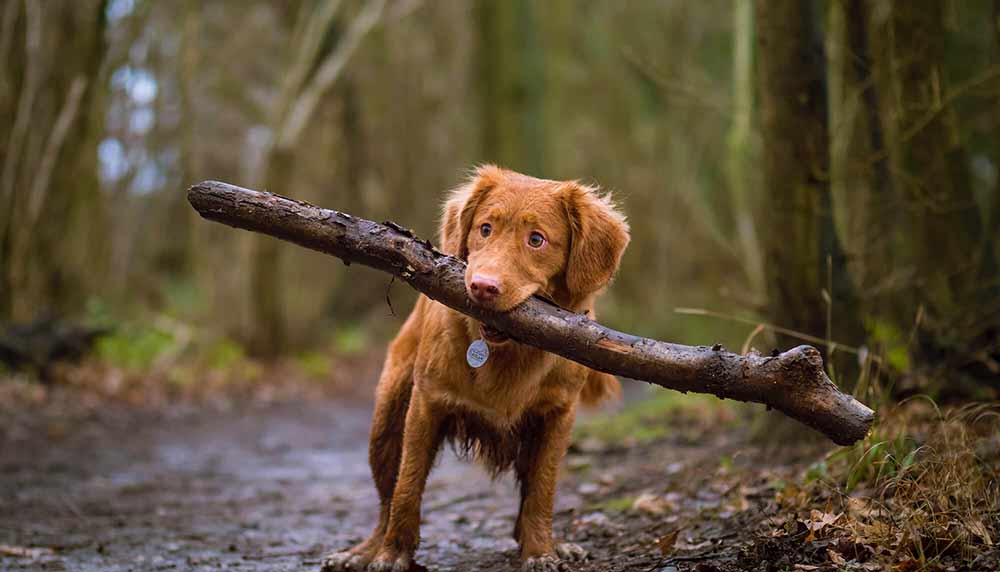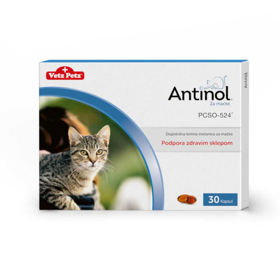What are Antinol tablets for dogs?
Antinol tablets for dogs are a high-quality food supplement suitable for dogs of all breeds, sizes and ages. They are recommended for all puppies that have problems with osteoarthritis, painful joints and lameness.
Antinol for dogs works against osteoarthritis. It is a degenerative disease that affects the joints. In dogs, this disease is the most common cause of lameness. The joints become inflamed, making it difficult for the dog to move. If the inflammation is not treated, it can lead to chronic degenerative osteoarthritis.
In Antinol food supplement for dogs is added the PCSO-524 complex (a patented complex of marine lipids consisting of a rare combination of lipid groups and unique unsaturated omega 3 fatty acids such as DHA and EPA), which is a powerful lipid extract obtained from the New Zealand green-lipped mussel Perna canaliculus.
Why is daily activity so important for a dog?
Daily dog activity helps with weight management, can relieve stress and help prevent a range of illnesses, and is also key to a dog's mental health and ultimately its behavior. As a general rule, dogs should have at least 20 to 30 minutes of active movement per day. But the level of activity varies between dogs of different ages, breeds and sizes.

Exercise is also important for maintaining the dog's joints. If your dog has joint problems, it is recommended to include exercise to strengthen the muscles that support the joints. Frequent exercise is also associated with a reduced sense of fear in dogs. Recent studies have shown that dogs that were active for longer periods of time showed less aggression, less fear of people and objects, and lower levels of separation anxiety than dogs that were not as active.
How to ensure a quality active life for your puppy?
The breed of your dog greatly affects the level of physical activity it needs. High-energy breeds such as the German Shepherd, Vizsla, Husky and Belgian Malinois require much more exercise than low-energy breeds such as the Bulldog or Basset Hound. When choosing a puppy, it is important to consider the breed's requirements for physical activity.
Puppies generally have more energy than adult dogs and therefore need more exercise. As puppies are constantly growing, incorporating several short walks or games throughout the day is a safer choice than one really long walk, as this can be too hard on your puppy's developing body.
Below are a couple of ideas that will improve your best friend's activity in addition to walks:
- Hiking: Take your dog with you on your next adventure in the mountains and hills.
- Cycling: Although not suitable for all dogs, many dogs run alongside their owners when they are on a bike. Cycling on the road is often dangerous, but many cities have bike lanes where your dog can safely accompany you.
- Swimming: Most dogs love water, and swimming is great for dogs dealing with joint pain as it provides low-impact exercise. A life jacket can help your dog stay in the water longer for optimal cardio.
- Ball and Frisbee Throwing: Trade balls, Frisbees or other prized toys to keep your dog on edge.
- Dog sports: try different activities such as Lure Coursing, Nose Work, Agility, Flyball, Schutzhund and Rally.
How do you know that your dog needs a higher level of activity?
Destructive behavior such as chewing on shoes or furniture, urinating and defecating in the house, rummaging through trash, destroying household items, or increased aggression toward people or other pets may be the result of lack of exercise.
Some dogs withdraw when they don't get enough physical stimulation. If your dog used to be very social and no longer runs to the door expecting a walk or acts disinterested when you enter the room, he may be depressed.
Hyperactivity when they are out for a walk. If your dog is too agitated when you clip his leash or when you're about to head out the door, this could be a sign of restlessness and a need for more physical activity. Excessive leash pulling can also mean that your dog has to expend more energy.
Your dog may bark and whine a lot if he is not getting enough exercise.
How much time should be devoted to dog activities per day?
Small breeds: moderate exercise needs with a daily walk of 20 to 30 minutes. The exception would be the coder and the miniature poodle, which are more active and also intelligent, so they require a little more physical activity and a lot of mental stimulation.
Hounds: they include e.g. greyhound, whippet and wolfhound. Although the Greyhound is a racing dog, it is bred for sprinting and needs only moderate exercise. Moderate walking, about 30 to 45 minutes a day, and maybe a few short sprints is enough to keep them happy and healthy.
Large breeds: these include e.g. Leonberg, Kangal, Newfoundland, Great Dane and St. Bernard. 30 to 45 minutes of walking a day is enough. In addition, many large breed dogs are avid swimmers, so swimming is an excellent exercise for them because it is low stress for their large body and weight.
Interesting reading: Antinol for cats - happy and active cat










 Facebook
Facebook
 Instagram
Instagram
 info@moja-lekarna.com
info@moja-lekarna.com

